Citibank 2011 Annual Report Download - page 7
Download and view the complete annual report
Please find page 7 of the 2011 Citibank annual report below. You can navigate through the pages in the report by either clicking on the pages listed below, or by using the keyword search tool below to find specific information within the annual report.-
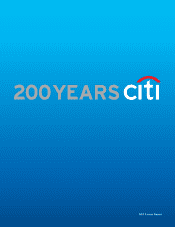 1
1 -
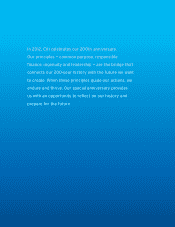 2
2 -
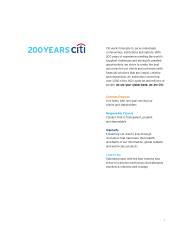 3
3 -
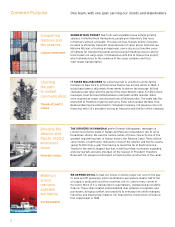 4
4 -
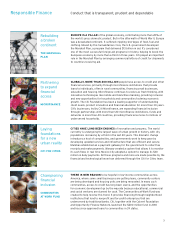 5
5 -
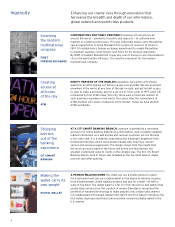 6
6 -
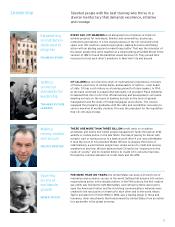 7
7 -
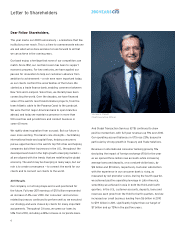 8
8 -
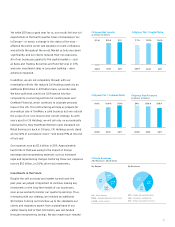 9
9 -
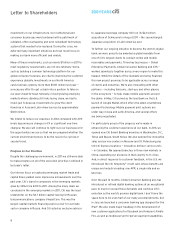 10
10 -
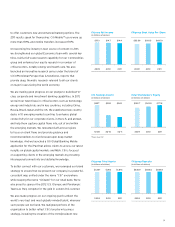 11
11 -
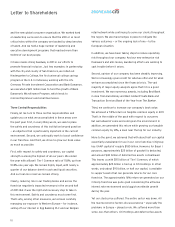 12
12 -
 13
13 -
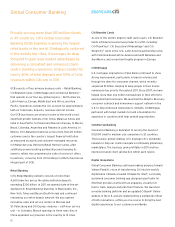 14
14 -
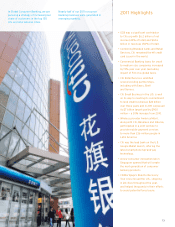 15
15 -
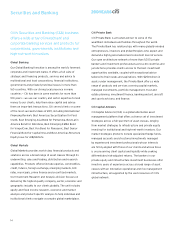 16
16 -
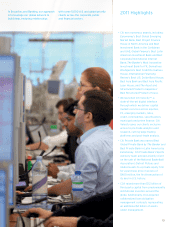 17
17 -
 18
18 -
 19
19 -
 20
20 -
 21
21 -
 22
22 -
 23
23 -
 24
24 -
 25
25 -
 26
26 -
 27
27 -
 28
28 -
 29
29 -
 30
30 -
 31
31 -
 32
32 -
 33
33 -
 34
34 -
 35
35 -
 36
36 -
 37
37 -
 38
38 -
 39
39 -
 40
40 -
 41
41 -
 42
42 -
 43
43 -
 44
44 -
 45
45 -
 46
46 -
 47
47 -
 48
48 -
 49
49 -
 50
50 -
 51
51 -
 52
52 -
 53
53 -
 54
54 -
 55
55 -
 56
56 -
 57
57 -
 58
58 -
 59
59 -
 60
60 -
 61
61 -
 62
62 -
 63
63 -
 64
64 -
 65
65 -
 66
66 -
 67
67 -
 68
68 -
 69
69 -
 70
70 -
 71
71 -
 72
72 -
 73
73 -
 74
74 -
 75
75 -
 76
76 -
 77
77 -
 78
78 -
 79
79 -
 80
80 -
 81
81 -
 82
82 -
 83
83 -
 84
84 -
 85
85 -
 86
86 -
 87
87 -
 88
88 -
 89
89 -
 90
90 -
 91
91 -
 92
92 -
 93
93 -
 94
94 -
 95
95 -
 96
96 -
 97
97 -
 98
98 -
 99
99 -
 100
100 -
 101
101 -
 102
102 -
 103
103 -
 104
104 -
 105
105 -
 106
106 -
 107
107 -
 108
108 -
 109
109 -
 110
110 -
 111
111 -
 112
112 -
 113
113 -
 114
114 -
 115
115 -
 116
116 -
 117
117 -
 118
118 -
 119
119 -
 120
120 -
 121
121 -
 122
122 -
 123
123 -
 124
124 -
 125
125 -
 126
126 -
 127
127 -
 128
128 -
 129
129 -
 130
130 -
 131
131 -
 132
132 -
 133
133 -
 134
134 -
 135
135 -
 136
136 -
 137
137 -
 138
138 -
 139
139 -
 140
140 -
 141
141 -
 142
142 -
 143
143 -
 144
144 -
 145
145 -
 146
146 -
 147
147 -
 148
148 -
 149
149 -
 150
150 -
 151
151 -
 152
152 -
 153
153 -
 154
154 -
 155
155 -
 156
156 -
 157
157 -
 158
158 -
 159
159 -
 160
160 -
 161
161 -
 162
162 -
 163
163 -
 164
164 -
 165
165 -
 166
166 -
 167
167 -
 168
168 -
 169
169 -
 170
170 -
 171
171 -
 172
172 -
 173
173 -
 174
174 -
 175
175 -
 176
176 -
 177
177 -
 178
178 -
 179
179 -
 180
180 -
 181
181 -
 182
182 -
 183
183 -
 184
184 -
 185
185 -
 186
186 -
 187
187 -
 188
188 -
 189
189 -
 190
190 -
 191
191 -
 192
192 -
 193
193 -
 194
194 -
 195
195 -
 196
196 -
 197
197 -
 198
198 -
 199
199 -
 200
200 -
 201
201 -
 202
202 -
 203
203 -
 204
204 -
 205
205 -
 206
206 -
 207
207 -
 208
208 -
 209
209 -
 210
210 -
 211
211 -
 212
212 -
 213
213 -
 214
214 -
 215
215 -
 216
216 -
 217
217 -
 218
218 -
 219
219 -
 220
220 -
 221
221 -
 222
222 -
 223
223 -
 224
224 -
 225
225 -
 226
226 -
 227
227 -
 228
228 -
 229
229 -
 230
230 -
 231
231 -
 232
232 -
 233
233 -
 234
234 -
 235
235 -
 236
236 -
 237
237 -
 238
238 -
 239
239 -
 240
240 -
 241
241 -
 242
242 -
 243
243 -
 244
244 -
 245
245 -
 246
246 -
 247
247 -
 248
248 -
 249
249 -
 250
250 -
 251
251 -
 252
252 -
 253
253 -
 254
254 -
 255
255 -
 256
256 -
 257
257 -
 258
258 -
 259
259 -
 260
260 -
 261
261 -
 262
262 -
 263
263 -
 264
264 -
 265
265 -
 266
266 -
 267
267 -
 268
268 -
 269
269 -
 270
270 -
 271
271 -
 272
272 -
 273
273 -
 274
274 -
 275
275 -
 276
276 -
 277
277 -
 278
278 -
 279
279 -
 280
280 -
 281
281 -
 282
282 -
 283
283 -
 284
284 -
 285
285 -
 286
286 -
 287
287 -
 288
288 -
 289
289 -
 290
290 -
 291
291 -
 292
292 -
 293
293 -
 294
294 -
 295
295 -
 296
296 -
 297
297 -
 298
298 -
 299
299 -
 300
300 -
 301
301 -
 302
302 -
 303
303 -
 304
304 -
 305
305 -
 306
306 -
 307
307 -
 308
308 -
 309
309 -
 310
310 -
 311
311 -
 312
312 -
 313
313 -
 314
314 -
 315
315 -
 316
316 -
 317
317 -
 318
318 -
 319
319 -
 320
320
 |
 |

5
Establishing
an institution
dedicated to
progress
FOUNDING STORY
EVERY DAY, CITI BANKERS work alongside tens of millions of clients to
achieve progress for individuals, families and communities, businesses,
institutions and nations. It is the shared purpose of the Citi community that
spans over 100 countries: people laying plans, making decisions and taking
action with an abiding passion to make things better. That was the character of
the dozen people who came together at a small building at 52 Wall Street in the
summer of 1812 to found the bank that would become Citi. They pooled their
resources to fund each other’s ambitions in New York City and beyond.
Setting
universal
standards for
leadership
TRAINING FUTURE
LEADERS
CITI ALUMNI go on to become chiefs of multinational corporations, ministers
of finance, governors of central banks, ambassadors of nations — even heads
of state. Citi has a rich history as a training ground for future leaders. In 1914,
as the bank continued to expand internationally, Citi president Frank Vanderlip
formalized that role in Citi’s first official learning and development curriculum,
dwelling not only on the rigors of banking but also on the tools of general
management and the study of foreign languages and cultures. The courses
equipped the program’s graduates with the skills and sensibilities necessary to
serve a new kind of worldly clientele. This was the precedent for the reputation
that Citi still enjoys today.
Making
money mobile
and secure
WALTER WRISTON
THERE ARE MORE THAN THREE BILLION credit cards in circulation
worldwide, and nearly four billion people manage their funds through an ATM,
website or mobile phone. In the late 1960s, the idea of paying for dinner with
a plastic card or having access to a bank account after 4 p.m. was unthinkable.
It took the vision of Citi president Walter Wriston to imagine the future of
retail banking, a world where people have simple access to credit and savings,
anywhere at any time. Wriston believed that Citi had to be “responsive to the
needs of society,” and he invested billions to create Citi’s consumer business
through the commercialization of credit cards and the ATM.
Talented people with the best training who thrive in a
diverse meritocracy that demands excellence, initiative
and courage
Leadership
Spurring
an era of
worldwide
growth
MOSES TAYLOR
FOR MORE THAN 100 YEARS, the United States has been a driving force of
innovation and economic success in the world. Setting that dynamo into motion
required bold action in the decades before. In the 19th century, the first modern
gas utility was founded to light Manhattan, vast railroad systems were laid to
open the American frontier and far-stretching communications networks were
created to link most points in America to each other and to the world. Moses
Taylor, president of Citi from 1856 to 1882, was a leading player in these and
numerous other investments that transformed the United States from an outlier
to a pacesetter in the global economy.
